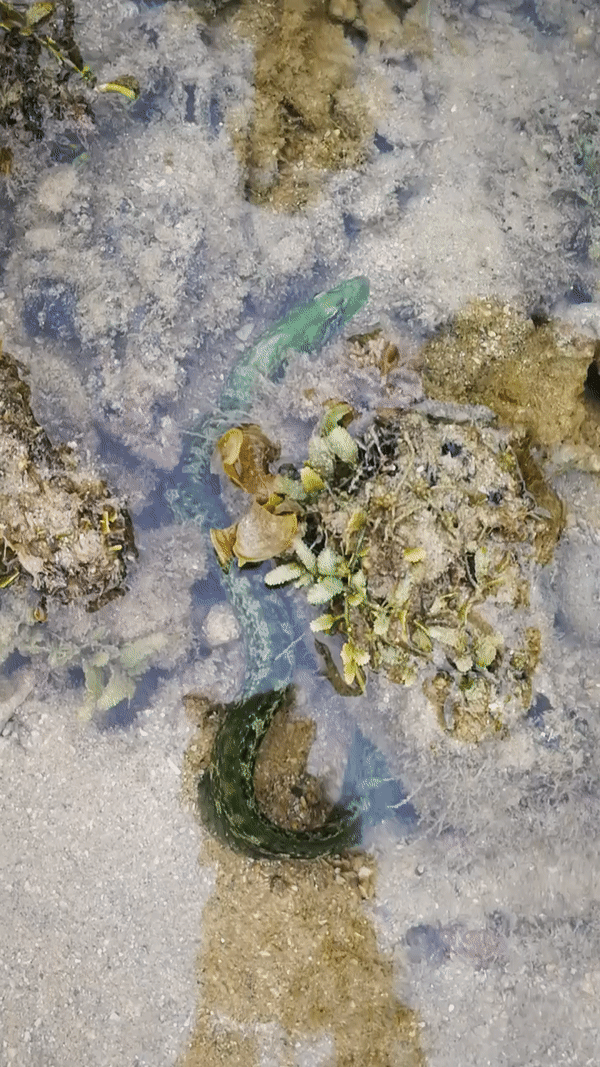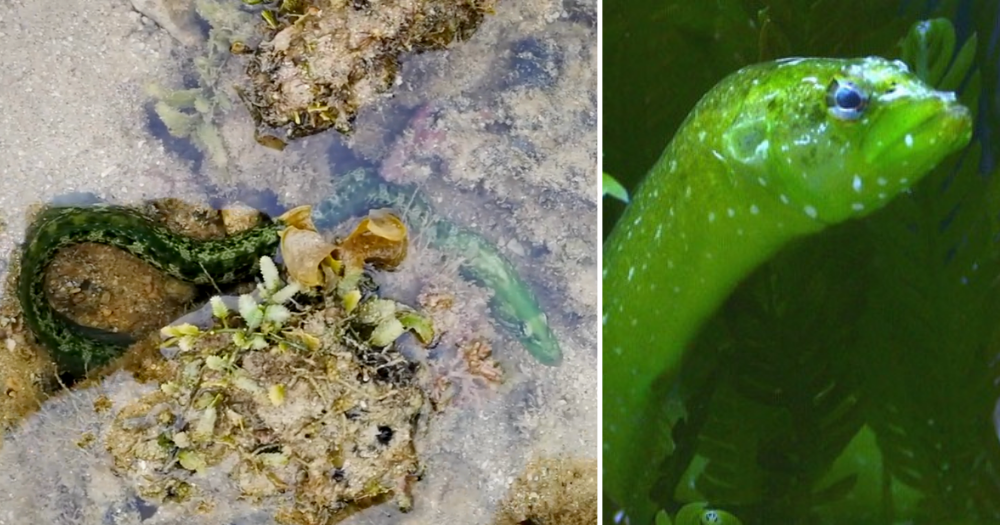Follow us on Telegram for the latest updates: https://t.me/mothershipsg
One man exploring Singapore's shores recently made a rather peculiar find.
Unusual creature
Chua Tien-Seng told Mothership that he was walking along an intertidal area in the afternoon during low tide.
The walk was conducted by a group called the Singapore Adventurous Nature-Lovers.
Low tides are the best timing to spot various creatures, as the water recedes enough to expose the rocky shoreline. Marine creatures like crabs, small fish, sea stars and corals make this area their home.
Chua and the group then came across a long snake-like creature partially hidden beneath a rock in an intertidal pool.
It was a vibrant green and he had "no idea what it was", initially believing it to be an eel. However, he added that eels are typically not as colourful.
 Video from Chua Tien-Seng
Video from Chua Tien-Seng
Chua revealed that the group had previously came across a similar individual which sported a different colour. However, that individual was less visible than the one seen above.
Eel or blenny?
To figure out the mysterious fish's identity, he took to Facebook group Nature Society Singapore, where other netizens provided some rather convincing suggestions.



The fish was subsequently identified as a carpet eel-blenny.
Despite its name, the fish is neither an eel nor a blenny (another order of fishes), and the species belongs to a family of fishes called dottybacks.
According to WildSingapore, carpet eel-blennies are common on Singapore shores, but are usually overlooked as they tend to camouflage and hide themselves against rocks and corals.
They can grow to around 45cm, and colours can vary from green to brown to blue to black.
The species is also carnivorous, and will feed on crustaceans and smaller fish.
Carpet eel-blennies are susceptible to the aquarium trade, and as such, might be poached from intertidal areas.Top photo from Chua Tien-Seng and Wikipedia (for illustrative purposes)
If you like what you read, follow us on Facebook, Instagram, Twitter and Telegram to get the latest updates.

